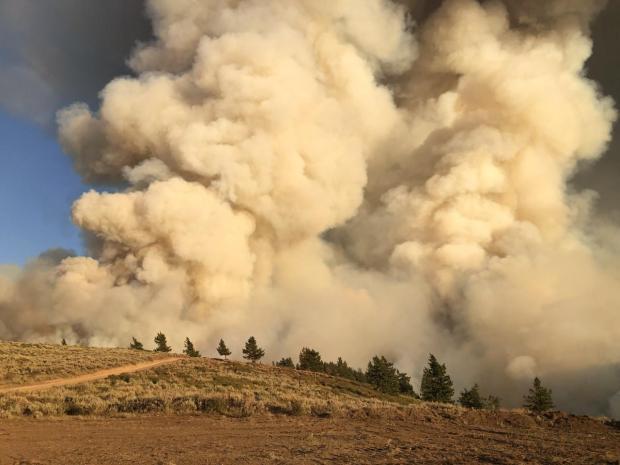Researchers Find Certain Colorado Forests Less Likely To Recover After Wildfires
BOULDER, Colo. (CBS4) – Researchers at the University of Colorado Boulder are learning some forests are having a harder time bouncing back from wildfires than in decades past. With several large wildfires burning in Colorado, the findings could eventually help land managers make decisions about post-fire recovery efforts.
The new study, which also included coauthors from the U.S. Forest Service, Northern Arizona University, Colorado State University, and University of North Carolina Wilmington, was recently published in the journal, Global Ecology and Biogeography. The team of researchers studied 22 burn areas encompassing 710 square miles western Colorado and several surrounding states.
"We've seen a shift since the 1980s of more area burning on average across the western U.S.," said Kyle Rodman, who participated in the study as a Ph.D. student. "A couple studies have been able to attribute that, in part, to climate change."
In decade's past, many of those areas recovered, but Rodman said that's changing. Over the past few years, his team focused its research on ponderosa pine and Douglas fir forests, which make up a large part of the forested region.
The team used satellite images and ground measurements to compare the health and appearance of forests before and after major fires. Some of the areas analyzed included the land affected by the 2002 Hayman Fire, the 1996 Buffalo Creek Fire, and the 2002 Missionary Ridge fire.
"The fire behavior may or may not be new and different, but certainly the amount of recovery we're seeing today is less than we saw a few decades ago," Rodman said.
Rodman and his colleagues attribute much of the decreasing ability for forests to bounce back to a warming climate, which is increasingly leaving drier, lower elevation areas more susceptible.
The team's models show it'll only get worse without action. According to the study, by 2051, under a moderate emissions scenario, less than 18% of Douglas fir and Ponderosa pine forests will likely recover following a fire. The team analyzed a higher emission scenario as well, finding the number drops to 6.3% for Douglas fir and 3.5% for Ponderosa pine forested area.
"The potential for many of those places to recover after fire will be much lower than it is now," Rodman said. "If we can sort of transition to some alternative fuels, if we can think of ways to curb carbon emissions, some of the impacts on these ecological processes might not be so dire."
Without that, Rodman tells CBS4 more burned forests may become grasslands, and the state's biodiversity, watersheds, and even identity are at risk.
"I hope that when people read these results, they see that we have two very different futures. One where things burn really often and they just don't grow back, and one where maybe they burn a little less often and things have a change," Rodman said.
The researchers also created a database with their findings, which they say can help land managers decide where they should and shouldn't invest resources after a fire.






